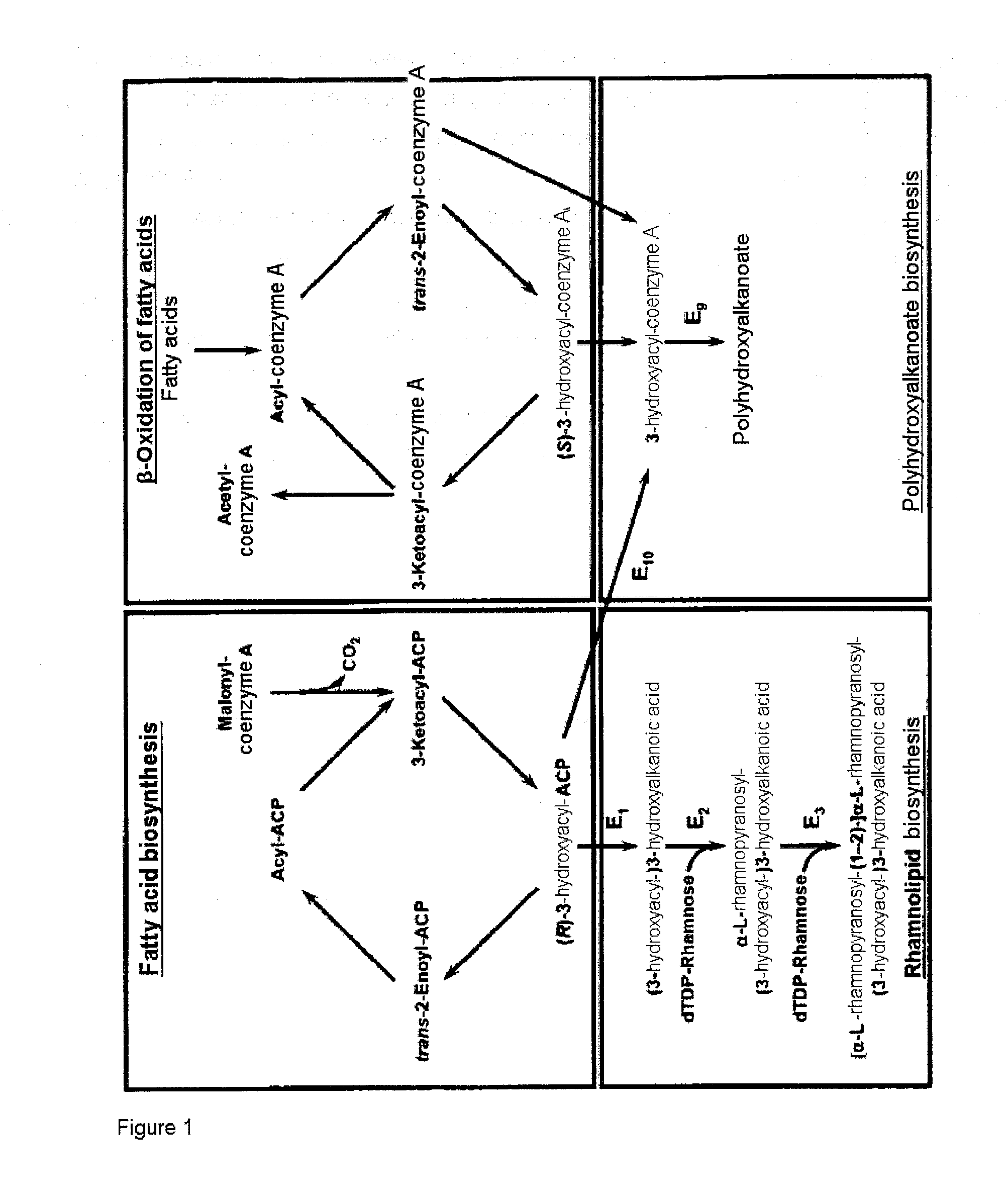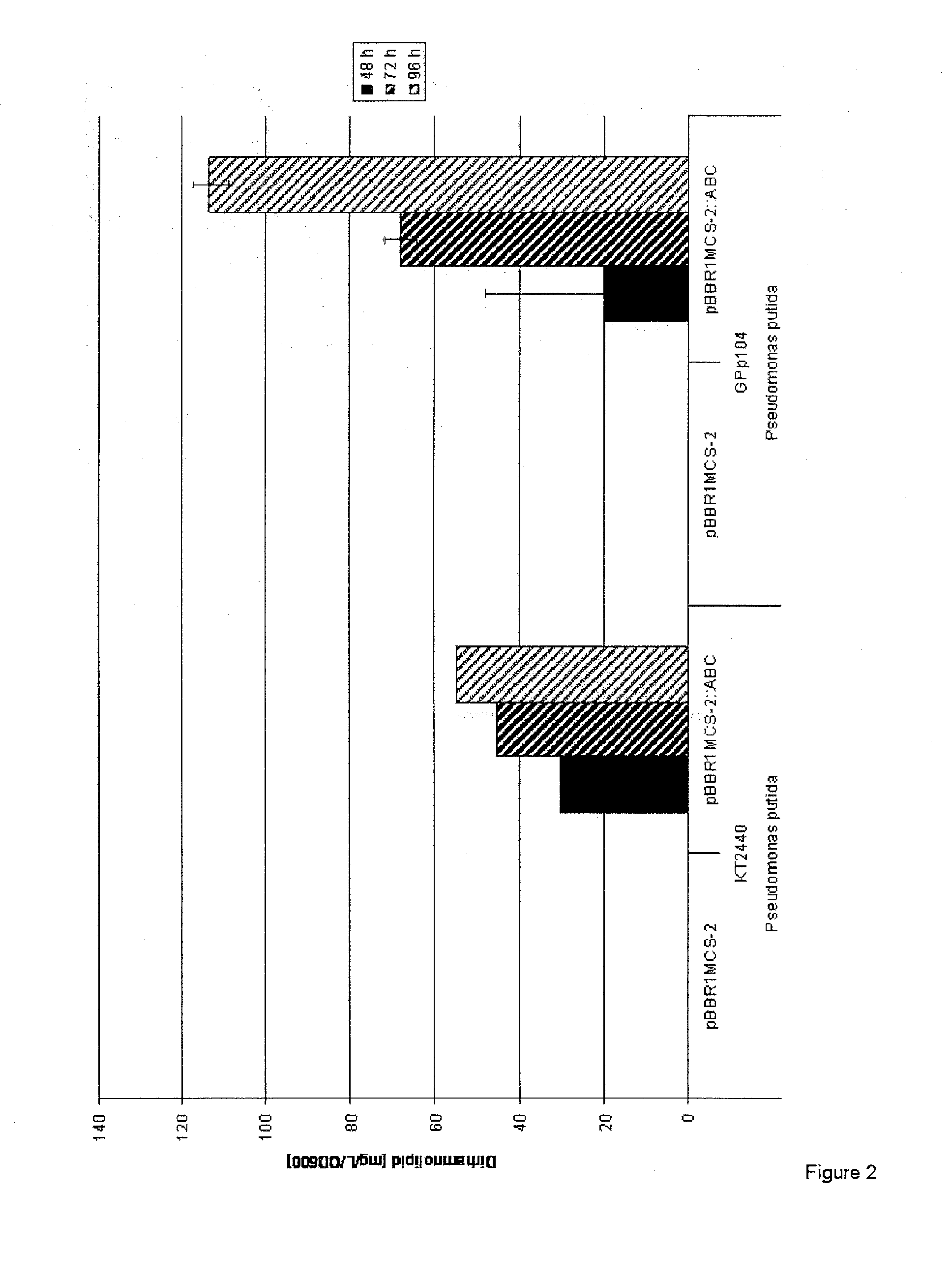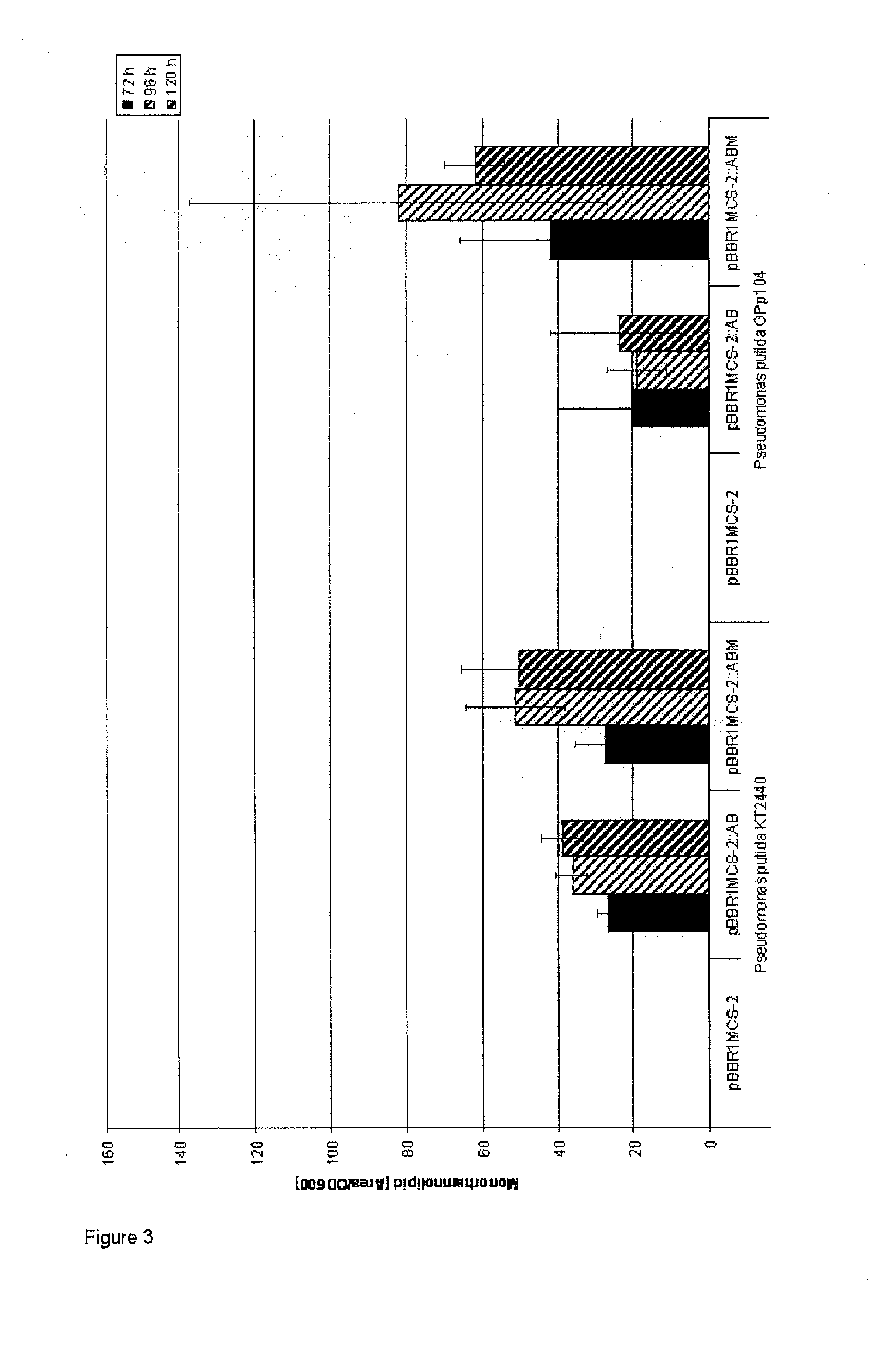Cells and methods for producing rhamnolipids
- Summary
- Abstract
- Description
- Claims
- Application Information
AI Technical Summary
Benefits of technology
Problems solved by technology
Method used
Image
Examples
examples
1. Construction of a Vector pBBR1MCS-2::AB for the Heterologous Expression of the Pseudomonas aeruginosa 1707 Genes rhlA and rhlB in Pseudomonas putida
[0118]For the heterologous expression of the Pseudomonas aeruginosa DSM1707 genes rhlA and rhlB, the plasmid pBBR1MCS-2::AB (Seq ID No. 38) was constructed. For this, the synthetic operon rhlAB (Seq ID No. 37) was synthesized by the company GeneArt AG (Regensburg) and intercloned in the commercial vector pMA (GeneArt AG). The basis for the synthesis was the already known genomic sequence of the Pseudomonas aeruginosa DSM1707. Starting from the vector pMA::AB, the synthetic operon was cleaved from the vector by means of BglII and XbaI and subsequently ligated into the expression vector pBBR1MCS-2 (Seq ID No. 49) cleaved with BamHI and XbaI (described in Kovach et al., 1995: Four new derivatives of the broad host range cloning vector pBBR1MCS carrying different antibiotic-resistance cassettes. Gene, 166:175-176). The resulting plasmid ...
PUM
| Property | Measurement | Unit |
|---|---|---|
| Fraction | aaaaa | aaaaa |
| Fraction | aaaaa | aaaaa |
| Fraction | aaaaa | aaaaa |
Abstract
Description
Claims
Application Information
 Login to View More
Login to View More - R&D
- Intellectual Property
- Life Sciences
- Materials
- Tech Scout
- Unparalleled Data Quality
- Higher Quality Content
- 60% Fewer Hallucinations
Browse by: Latest US Patents, China's latest patents, Technical Efficacy Thesaurus, Application Domain, Technology Topic, Popular Technical Reports.
© 2025 PatSnap. All rights reserved.Legal|Privacy policy|Modern Slavery Act Transparency Statement|Sitemap|About US| Contact US: help@patsnap.com



